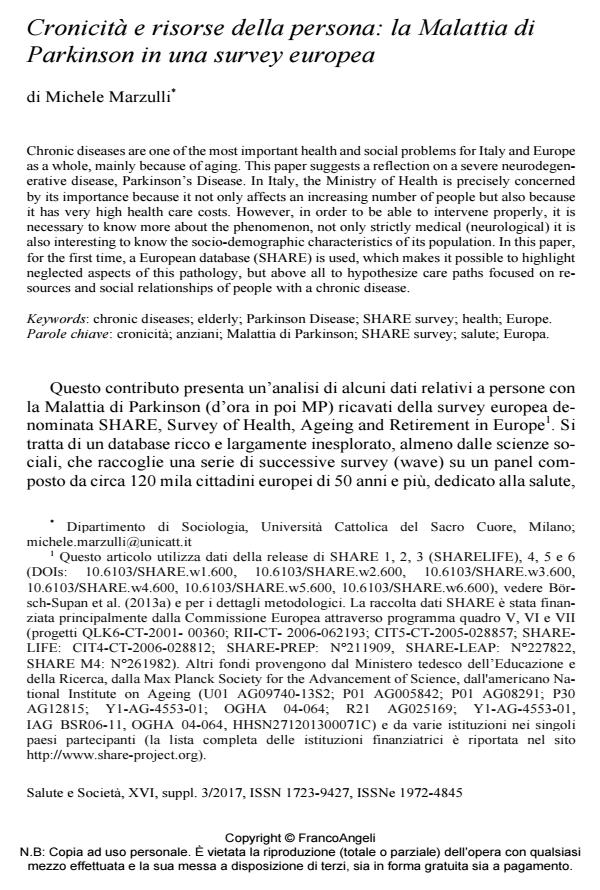Cronicità e risorse della persona: la Malattia di Parkinson in una survey europea
Journal title SALUTE E SOCIETÀ
Author/s Michele Marzulli
Publishing Year 2017 Issue 2017/3-Suppl.
Language Italian Pages 15 P. 32-46 File size 99 KB
DOI 10.3280/SES2017-SU3003
DOI is like a bar code for intellectual property: to have more infomation
click here
Below, you can see the article first page
If you want to buy this article in PDF format, you can do it, following the instructions to buy download credits

FrancoAngeli is member of Publishers International Linking Association, Inc (PILA), a not-for-profit association which run the CrossRef service enabling links to and from online scholarly content.
Chronic diseases are one of the most important health and social problems for Italy and Europe as a whole, mainly because of aging. This paper suggests a reflection on a severe neurodegenerative disease, Parkinson’s Disease. In Italy, the Ministry of Health is precisely concerned by its importance because it not only affects an increasing number of people but also because it has very high health care costs. However, in order to be able to intervene properly, it is necessary to know more about the phenomenon, not only strictly medical (neurological) it is also interesting to know the socio-demographic characteristics of its population. In this paper, for the first time, a European database (SHARE) is used, which makes it possible to highlight neglected aspects of this pathology, but above all to hypothesize care paths focused on resources and social relationships of people with a chronic disease.
Keywords: Chronic diseases; elderly; Parkinson Disease; SHARE survey; health; Europe.
Michele Marzulli, Cronicità e risorse della persona: la Malattia di Parkinson in una survey europea in "SALUTE E SOCIETÀ" 3-Suppl./2017, pp 32-46, DOI: 10.3280/SES2017-SU3003